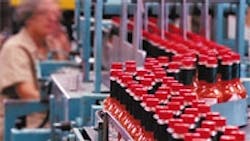In today’s marketplace, it’s often what’s on the outside of a product that counts. Packaging and the equipment tasked to produce it, therefore, are often the real “secret ingredients” responsible for the success of a product.
Imagine a shelf full of candy bars wrapped in plain brown paper. You reach for your favorite. It may taste the same, but the experience probably would not be as enjoyable. The difference is packaging.
Packaging is more than an ingredient, however. It’s also an enabler. Convenient, re-usable, transportable packaging, for example, eases consumers’ active lifestyles, letting them take food and other products wherever they go. Safety measures such as inner and outer seals on bottles give consumers peace of mind, ensuring that the contents have remained untouched since leaving the factory.
New packaging features, of course, present a challenge to equipment designers. As packages become more complex and the materials more exotic, designers need to reach back further to create equipment up to the task. Today packaging machines must be fast, flexible, energy efficient, and easy to set up and run. On top of that, manufacturers are demanding machines that require less maintenance.
To continually come up with high-impact, low-cost solutions to meet such diverse needs, designers are turning to computer technology, networking, sensing, and servo control. They’re also pushing the limits of proven mechanical technology, such as clutches, brakes, and bearings.
The latest and perhaps most promising trend is the increasing use of the Internet as a communication and control tool on the plant floor. Running alongside existing networks and sensor buses, the Internet gives machine and plant engineers additional flexibility to connect and interface automation components. It also lends itself to remote monitoring and control, as well as real-time process simulation.
